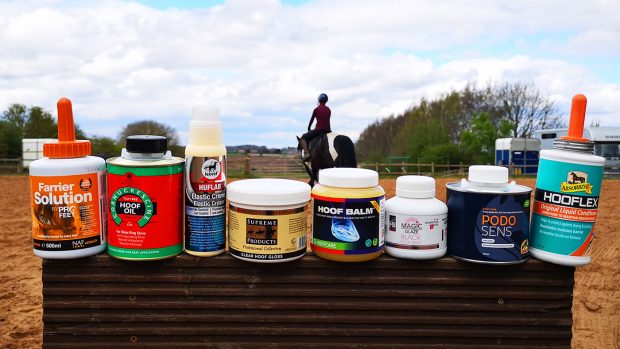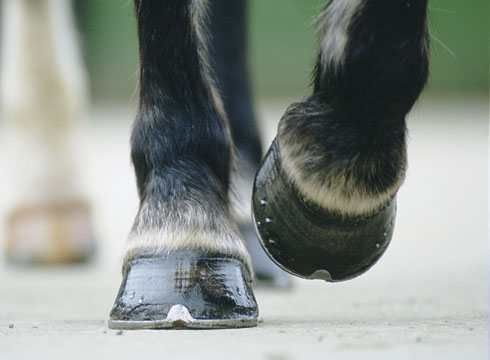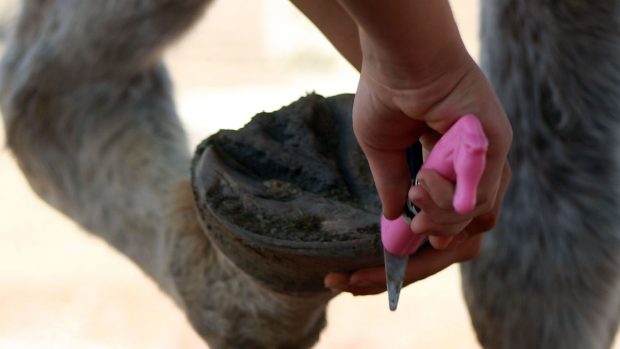Most owners have a range of professionals working with their horse. On the healthcare team, there is a vet and a farrier, plus possibly a physiotherapist or chiropractor, an equine dental technician (EDT) and a nutritionist. Also in the mix is a trainer or instructor, and a saddler.
In recent years an increased level of co-operation and interaction has developed between these professions, particularly vets and farriers. Although some problems may still occur, the quality of farriery has improved considerably in the past 20 years and with it has come a mutual respect between equine vets and farriers.
Understanding strengths
In order to improve the relationship between vets and farriers further, it is important to recognise the separate and complementary areas of excellence.
An equine vet might be able to repair a fractured bone with a surgical procedure, but few vets could start from scratch and manufacture a perfectly fitting purpose-made surgical shoe for a particular foot problem.
A skilled farrier might recognise and adjust slight changes in breakover or foot placement, but few would be confident exploring deep in the foot to trace the path of a foreign body.
Vets and farriers need to respect the skills and training of the other professionals on the healthcare team and to use them to full advantage. Problems arise when this respect is lost or when standards of professional courtesy are not maintained.
This can happen when the vet blames the farrier for causing an episode of lameness or when the farrier criticises the vet for paring away far too much of the wall in the search for a foot abscess. In these cases no one benefits, least of all the horse.
It is hardly surprising that some farriers have nothing but contempt for the vet, who turns up with a handful of old rusty tools that have been knocking about in the bottom of the car boot and tries to work on a horse’s hoof. If vets intend to work on hooves, they should have excellent equipment in good order and know how to use it properly.
In the same way, farriers will do themselves no favours by rubbishing the diagnosis of the vet achieved after painstaking investigation and then making guesswork suggestions of their own, or by criticising the instructions to poultice a foot or the request to fit a remedial shoe.
Horse owners can help by facilitating a good working relationship between the farrier and the vet. If both vets and farriers are working on a lame horse, there are some basic rules that will improve the progress of the clinical case.
Rule 1: The vet and the farrier should communicate directly with each other, not through the client
However competent and articulate the client, it is not sensible for instructions, opinions nor discoveries to be relayed through a third party. If during a routine visit the farrier finds something in the foot that requires veterinary attention, it is better for him to give the vet a quick call rather than to tell the client to call the vet. Or if the vet thinks a particular shoe will benefit the horse, the farrier should be contacted directly, or at the very least a prescription should be written out, with suggestions for the farrier.
Rule 2: The vet and the farrier should try to meet face to face over the case in question
Even if only one meeting can be arranged between vet, farrier and client to look at the horse together, it will reap enormous benefits. With both professionals jointly looking at the horse, the diagnosis can be discussed, X-rays scrutinised and a plan of action agreed. Subsequent examinations and repeat shoeings may then be undertaken independently, with phone calls between the two when necessary.
Rule 3: The farrier and vet should recognise and respect each other’s areas of knowledge and technical skill
Vets take the best X-rays of horses’ feet and can interpret nerve blocks, scans and other images. Farriers make the best surgical appliances and achieve the best results with rasp and hoof knife. The two working together will provide the best outcome for the horse.
Rule 4: Vet and farrier should seek each other’s opinion before demanding a particular course of action
Although this is simple professional courtesy, it is often overlooked. A horse is admitted to the clinic for lameness work-up and a diagnosis achieved. It is discourteous for the vet to issue to the owners instructions about shoeing. Is the owner going to shoe the horse? Surely the better course of action is to contact the farrier, explain the diagnosis and suggest a shoeing regime that in the past has given good results. Maybe the farrier has some ideas that will improve the outcome. In the same way, when the farrier deals with a very lame horse with a swollen leg and discovers and opens a substantial abscess under the sole, is it his or her job to tell the owner to get some antibiotics? Owners can encourage the farrier to contact the vet directly and discuss the case. This will build the professional relationship and benefit the horse.
Rule 5: The owner, the vet and farrier should keep in touch through the follow-up in the lameness case
Owners, farriers and vets will do nothing but good by keeping in touch as the case progresses. With the benefit of text messages, e-mails and voice mails, there is no excuse for failing to send brief informative messages about the case if the farrier and vet know that they are both attending the animal.



